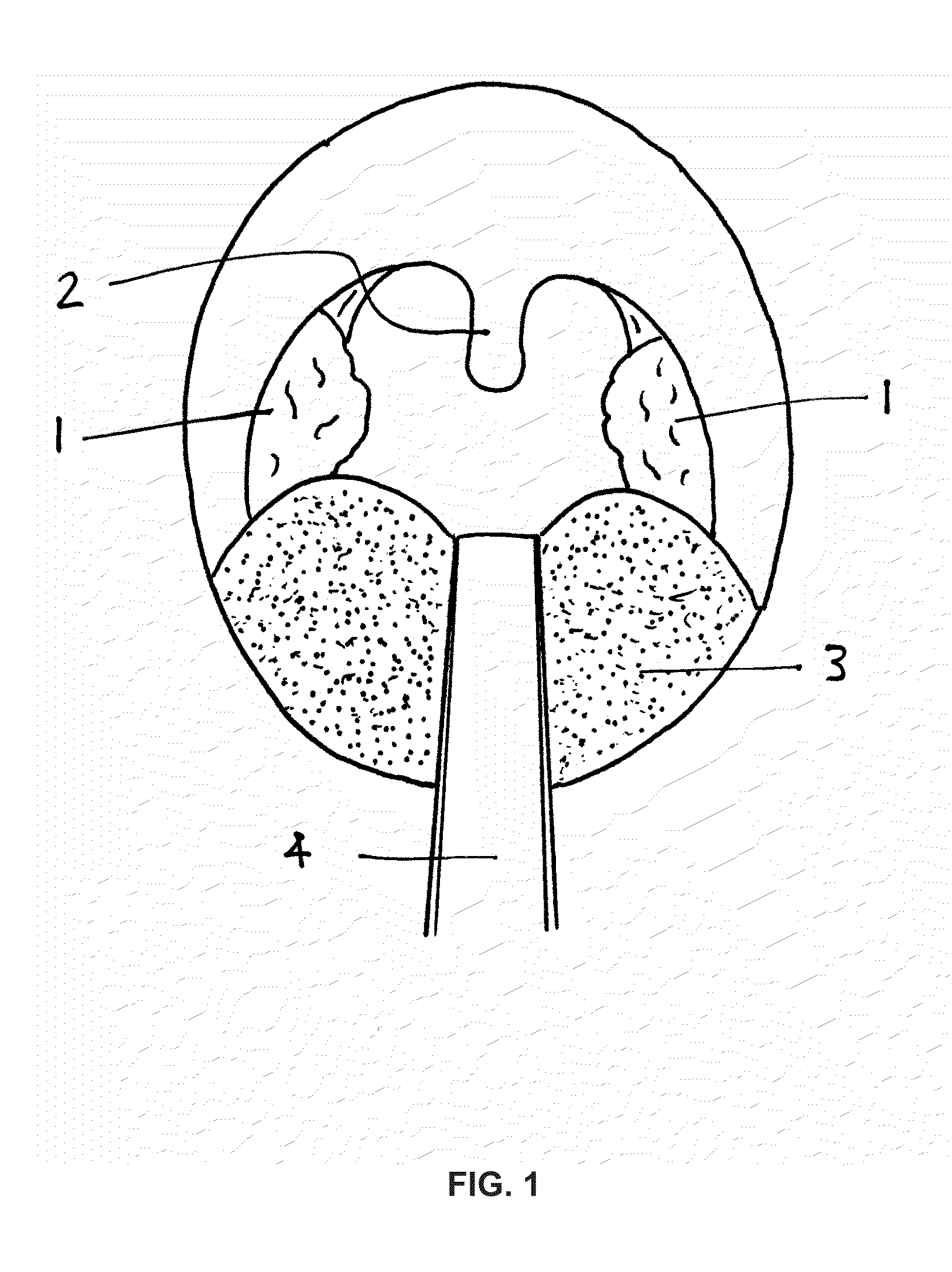Photothermal treatment of soft tissues
a soft tissue and photothermal technology, applied in the field of photothermal treatment of soft tissues, can solve the problems of affecting the treatment effect, so as to achieve the effect of avoiding thermal injury, and reducing the amount of fluid in the mucosal layer
- Summary
- Abstract
- Description
- Claims
- Application Information
AI Technical Summary
Benefits of technology
Problems solved by technology
Method used
Image
Examples
first embodiment
[0186]FIGS. 24A and B are a schematic depiction of a simple first embodiment of the device of the invention. As will be described in detail below, in this embodiment, the distal surface of the light guide plate serves as the light-transmitting contact surface. The optical element includes an air gap adjacent to a proximal surface of the light guide plate. The air gap is enclosed by the base interior surface and the lateral interior surface of the optical assembly housing.
[0187]FIG. 24A shows the circular contact surface 611 of the optical assembly. The contact surface 611 is flush with the edge surface 612e of the device housing 612. An optical fiber 609 is attached at or near its light-emitting distal end to the housing 612 with a connector 608. The proximal end of the optical fiber is attached to a laser or other light source (not shown).
[0188]FIG. 24B is a schematic cross-section depiction of the housing and optical stack of this embodiment. Inside the housing 612 is a light guid...
second embodiment
[0199]As will be described in detail below, in this embodiment, the optical element of the apparatus includes an air gap adjacent to a proximal surface of the light guide plate. The air gap is enclosed by the base interior surface and the lateral interior surface of the optical assembly housing. The optical element also includes a cooling layer adjacent to the distal surface of the light guide plate. The contact window has a proximal surface adjacent to the cooling chamber and an exposed distal surface that serves as the light transmitting contact surface of the optical assembly.
[0200]FIGS. 26 A and B are a schematic depiction of an embodiment of the invention that includes active cooling capability. FIG. 5A shows the circular light-transmitting distal surface 611 of a contact window. The contact surface 611 is flush with the edge surface 612e of the device housing 612. An optical fiber 609 is attached at or near its light-emitting distal end to the housing 612 with a connector 608....
third embodiment
[0209]As will be described in detail below, in this embodiment, the optical element includes a first air gap adjacent to a proximal surface of the light guide plate. The first air gap is enclosed by the base interior surface and the lateral interior surface of the optical assembly housing. The optical element further includes a second air gap between the distal surface of the light guide plate and the proximal surface of a coolant layer window. A coolant layer is between the coolant layer window and the proximal surface of a contact window. The exposed distal contact surface serves as the light-transmitting contact surface.
[0210]FIG. 27 is a schematic cross-section depiction of the housing and optical stack of a third embodiment of the invention. As in the second embodiment, the third embodiment has active cooling capability, however the optical stack has a minimal air gap between the light guide plate and a cooling layer window, to reduce scattering within the optical stack and the...
PUM
 Login to View More
Login to View More Abstract
Description
Claims
Application Information
 Login to View More
Login to View More - R&D
- Intellectual Property
- Life Sciences
- Materials
- Tech Scout
- Unparalleled Data Quality
- Higher Quality Content
- 60% Fewer Hallucinations
Browse by: Latest US Patents, China's latest patents, Technical Efficacy Thesaurus, Application Domain, Technology Topic, Popular Technical Reports.
© 2025 PatSnap. All rights reserved.Legal|Privacy policy|Modern Slavery Act Transparency Statement|Sitemap|About US| Contact US: help@patsnap.com



